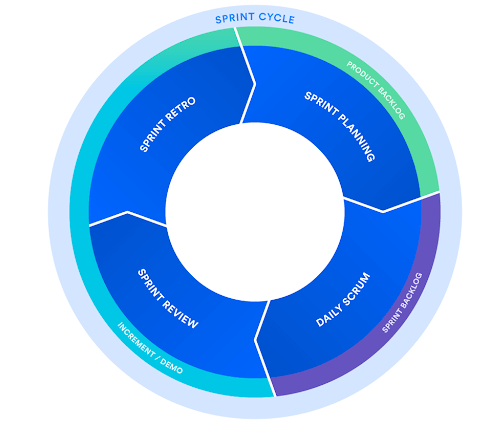What do product people do in a Scrum process?
Many organisations use Scrum in their product delivery (including a few of my previous employers) and the product team has certain tasks they need to perform in order to keep the team functioning. What are these tasks and how should they be done?
Scrum takes its name from rugby, where a scrum is where a mini-team of players huddle together to push their opponents and take control of the ball. In a product delivery sense, it is a framework that helps teams work together, encouraging close working, focused attention and continuous improvement.
I like it as an approach as it maintains focus on the goals at hand and aims to remove any obstructions that might get in the way of this. But what's it all about and what does this mean for a product manager?
What is Scrum?
There is often confusion between scrum and agile, with many thinking they are interchangeable, most likely because scrum is focused on continuous improvement, and this is a core principle of agile. However, scrum is a framework for getting work done, whereas agile is a mindset.
The framework has artefacts and ceremonies that keep the team focused on their delivery.
Artefacts
Product Backlog - the list of work that needs to be done
Sprint Backlog - the list of work that the team has agreed to do within the sprint period
Sprint Goals - the expected outcome at the end of the sprint, typically a new iteration of the product following released updates
Ceremonies
Backlog Refinement - the session where the team review the product backlog, and clarify any unclear aspects, and estimate the effort involved in delivering the work
Sprint Planning - the session where the team agrees the sprint backlog and sprint goals
Daily Scrum - the short gathering at the same time every day for the team to confirm what work is done, what is being done, and what might be causing issues
Sprint Review - the session at the end of the sprint to review the outcome of the sprint
Sprint Retrospective - the session where the team review what was successful and what was less so, with a view to finding ways to improve performance in the next sprint.
Example of a Sprint Cycle (copyright Atlassian)
What does a Product Manager do in Scrum?
The product role within scrum comes with the title of Product Owner, which is a specific role within the team, however, it carries with it many of the same responsibilities that product teams do in non-scrum organizations.
The tasks come with the overall goal of being the voice of the stakeholder and protector of the product, which involves:
Managing and prioritizing the product backlog
Working with the stakeholders to understand what's needed
Communicating with the team so they understand the work to be done
Decide when to ship the product
What are the benefits of Scrum?
For me, the regular cadence of a scrum process really supports in keeping the business focused on what really needs to be done.
The regular patterns of activities help everyone in the business understand what needs to be done, and importantly when it needs to be done, and it helps to avoid the inevitable distractions that will look to push teams off course.
Where those transitioning into scrum sometimes face challenges is in the change from delivering complete features (waterfall delivery) to smaller iterations of work, and it is this area that a product person really can support the transition, as they can chunk up the work into suitable stories for delivery that can allow the product to benefit.
This shorter delivery cycle which is the aim of scrum also allows the product owner to speak to stakeholders more frequently about delivering value to them sooner, which all stakeholders love.





